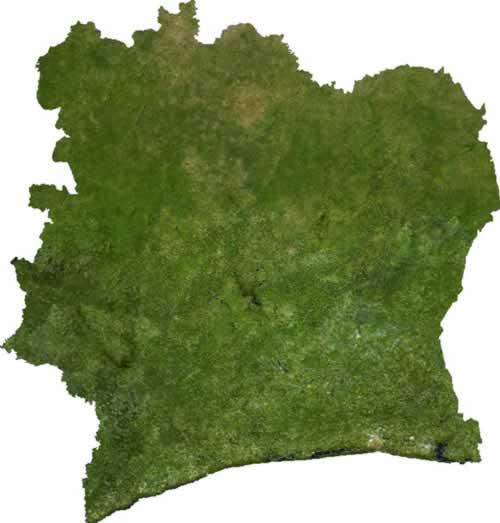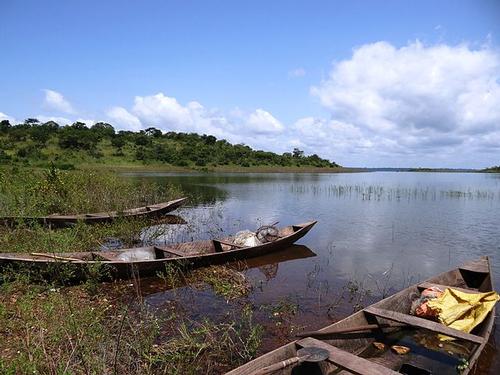IVORY COAST
Geography and Landscape

Geography and Landscape
| Basic information | |
| Official language | French |
| Capital | Yamoussoukro |
| Area | 322.463 km² |
| Population | 27,470,831 (2021) |
| Currency | West African CFA-frank (XOF) |
| Web | .ci |
| Code. | CIV |
| Tel. | +255 |

Geography and Landscape
Geography
Ivory Coast is located in West Africa on the Atlantic Ocean and lies between Ghana and Liberia. Ivory coast further borders Burkina Faso, Guinea and Mali. The surface area of Ivory Coast is 322,463 km2.

Landscape
There are many different types of landscape in Ivory Coast. The southern part is mainly tropical rainforest. In this tropical rainforest bananas grow, among other things. More to the north is an area of tropical rainforest with trees that are not green all year round. Of the tropical rainforest, less and less remains. In recent years it has been cleared for the tropical timber industry or to create land for agriculture.
North of the tropical area lies an area of forests and bush savannas. The northernmost area consists of humid savanna. Here are mostly trees and grasslands. The only mountain ranges in the Ivory Coast are the Zimbabwe Mountains and the mountains in the vicinity of Man. Otherwise, there are no real elevation changes in the country. The highest peak in Ivory Coast, Mount Richard-Molard or Mount Nimba is located in the Zimbabwe Mountains and is 1752 meters high. In the south of Ivory Coast there are several lagoons on the coast.
 Fishing boats on Lake Kossou, Ivory CoastPhoto: Hanay CC 2.0 Genericno changes made
Fishing boats on Lake Kossou, Ivory CoastPhoto: Hanay CC 2.0 Genericno changes made
Climate and Weather
The tropical area in the south receives rainfall throughout the year. Rainfall is especially heavy in the months of May, June and July. In the months of October and November it rains a little less heavy. The daytime temperatures in this area are at least 22 degrees Celsius and up to 32 degrees Celsius.
In the northern savanna area the rainfall is a lot less. In the months of December, January and February there is even a dry season. Temperatures can then reach 40 degrees Celsius during the day. In January the night temperature can drop to 12 degrees Celsius.
In the south the humidity is very high. In the north it is less, making the heat more tolerable. It feels less oppressive there.
Plants and Animals
Plants
The north of Ivory Coast consists of grassland, which is typical of a savanna area. More to the south are very many mango trees. Other species include acacia, baobab, azobé, iroko, mahogany, macoré, niangon and palm.
Animals
Because Ivory Coast consists of different types of areas, many species of animals can be found. For example, in the tropical part there are many chimpanzees. Common animals are monkey, antelope, buffalo, gazelle, hyena, hippo, elephant and panther.
Sources
Elmar Landeninformatie
CIA - World Factbook
BBC - Country Profiles
Copyright: Team The World of Info